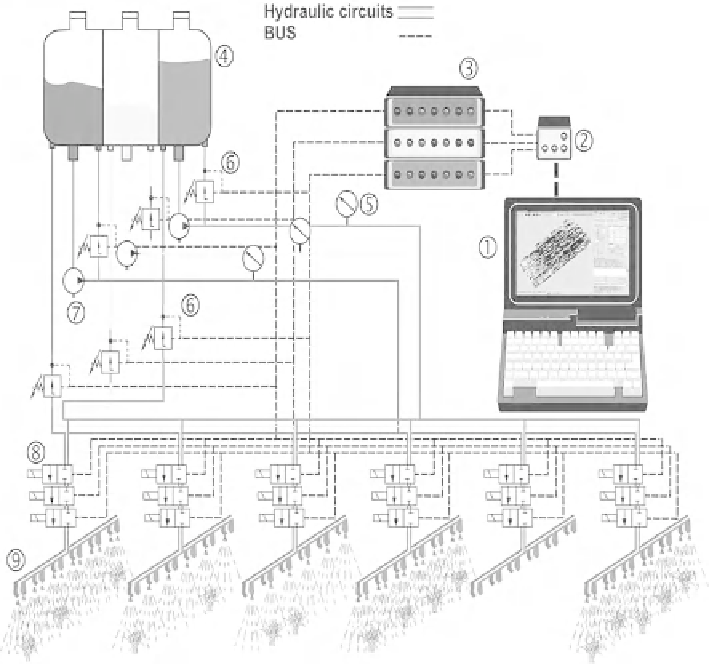Agriculture Reference
In-Depth Information
Fig. 10.13
Schematic confi guration of the multiple sprayer (Gerhards and Oebel
2006
) with:
1
board computer with application map,
2
control unit for spray computer,
3
spray computer,
4
tanks,
5
manometers,
6
pressure valves,
7
pumps,
8
solenoid valves,
9
boom sections with nozzles
E f fi cacy of site-specifi c weed control (see Sect.
10.2
, top) attained on the average
85-98 % and was similar to uniform herbicide applications.
Knowledge of spatial and temporal variability of weed populations offers large
potentials for precise control methods and thus for using less herbicides resulting
in less herbicide residues in the environment and food chain. Site-specifi c weed
control methods can be realized when automatic sensor technologies for weed
detection and patch spraying technologies are combined with precise decision
algorithms.
In addition to this practical benefi t, weed mapping helps to understand weed-
crop interactions and population dynamics of weed species. It allows quantifying
yield effects of different weed infestations in the fi elds and modelling the spatial
and temporal variability of weed populations under different crop management
systems.

